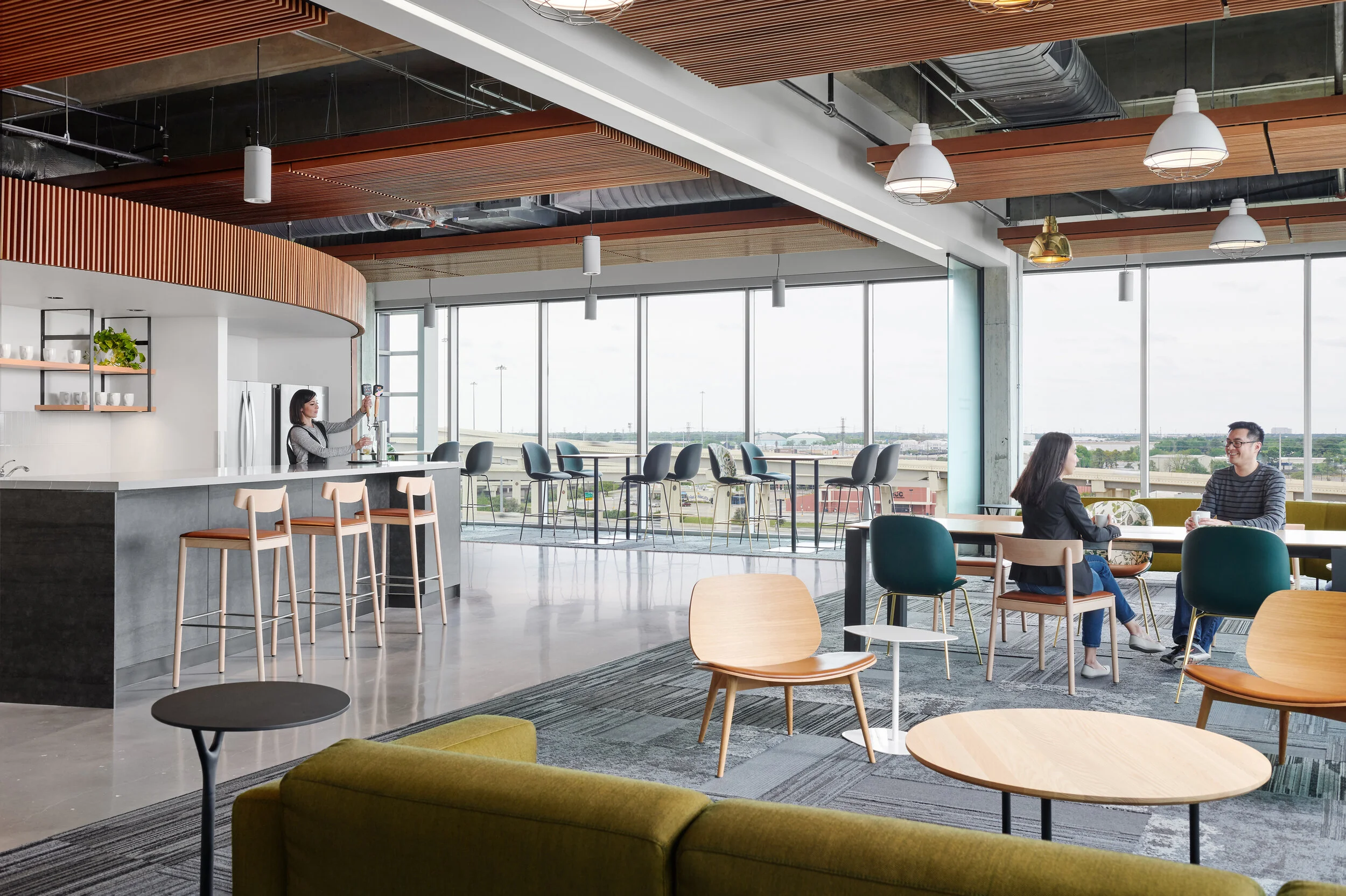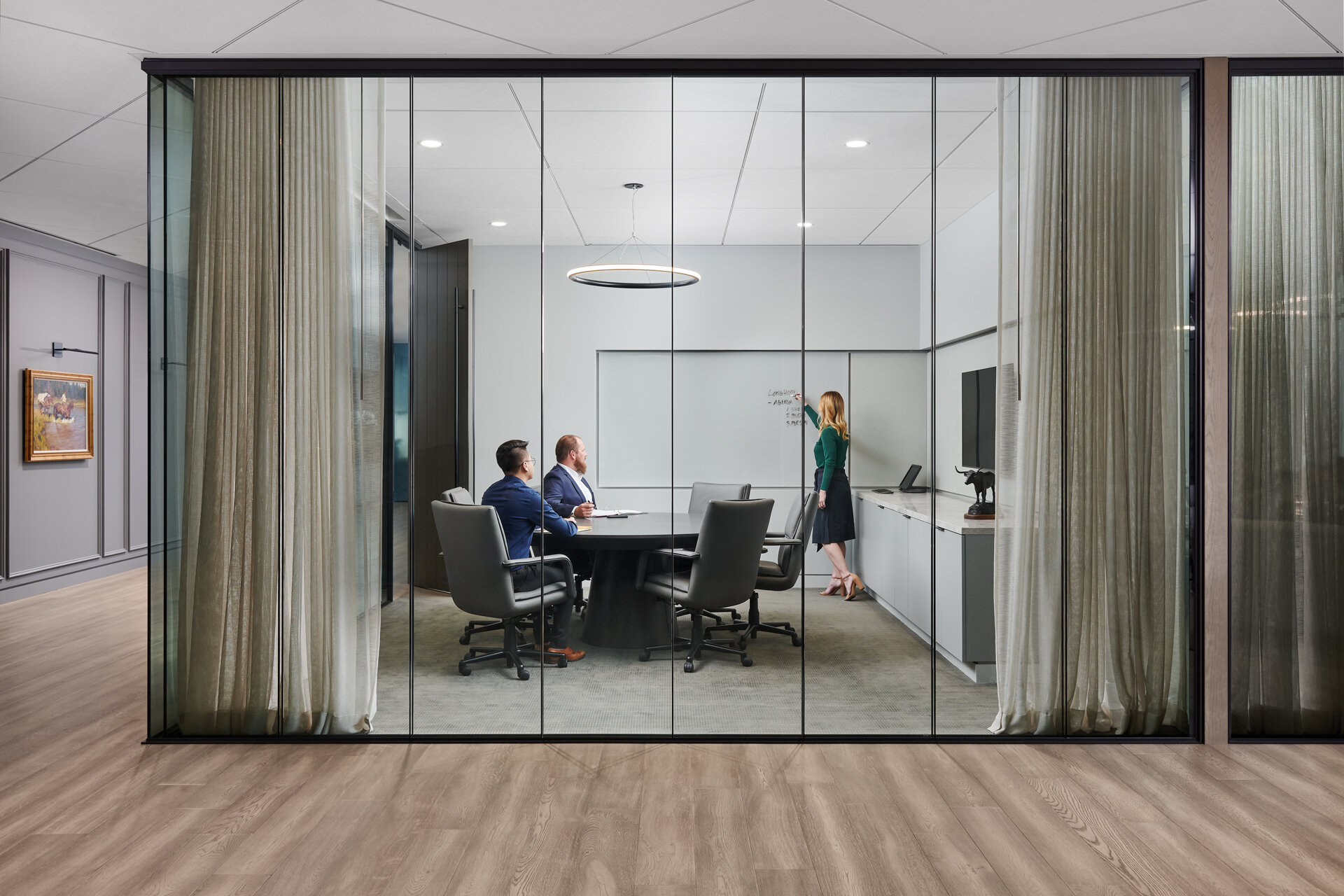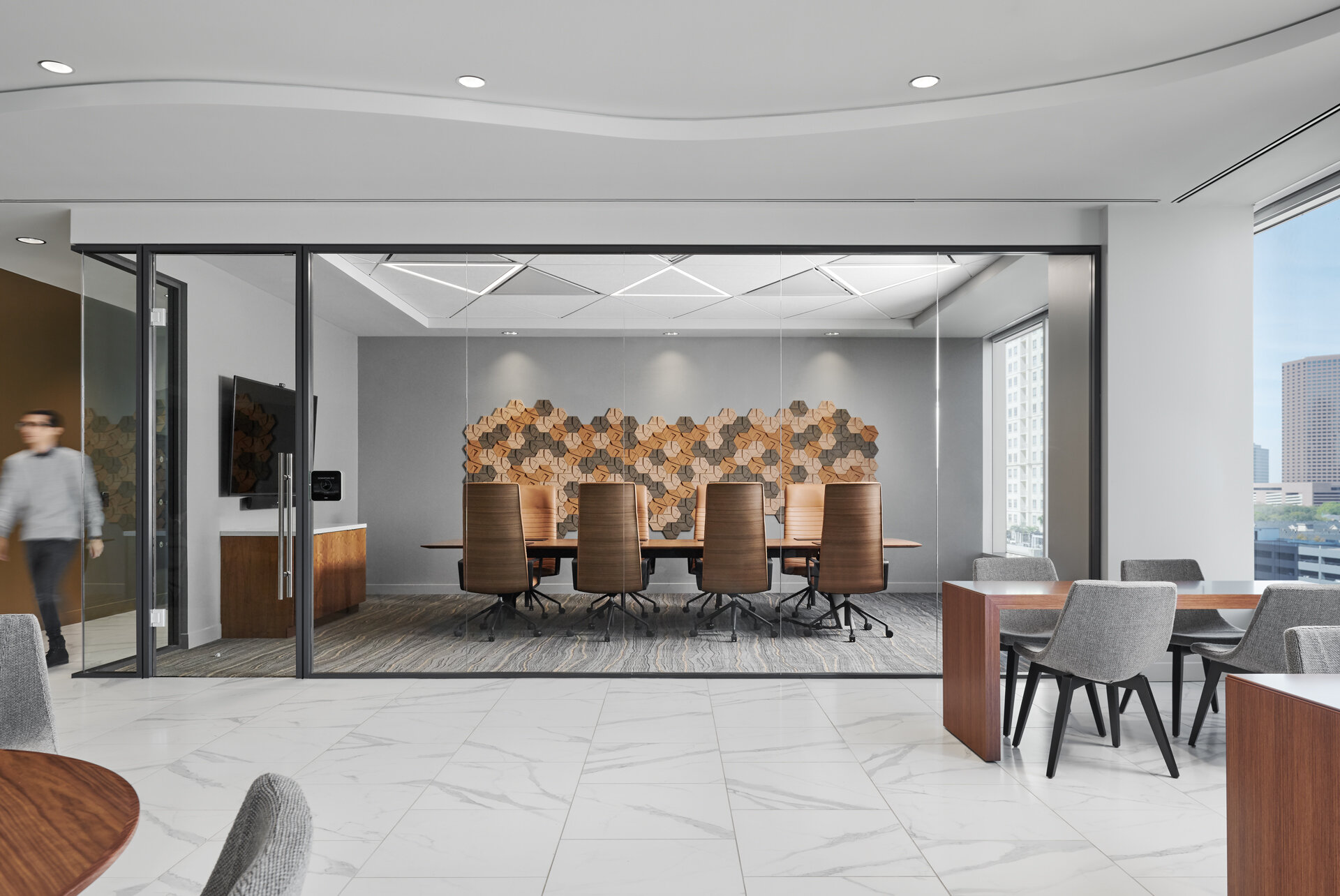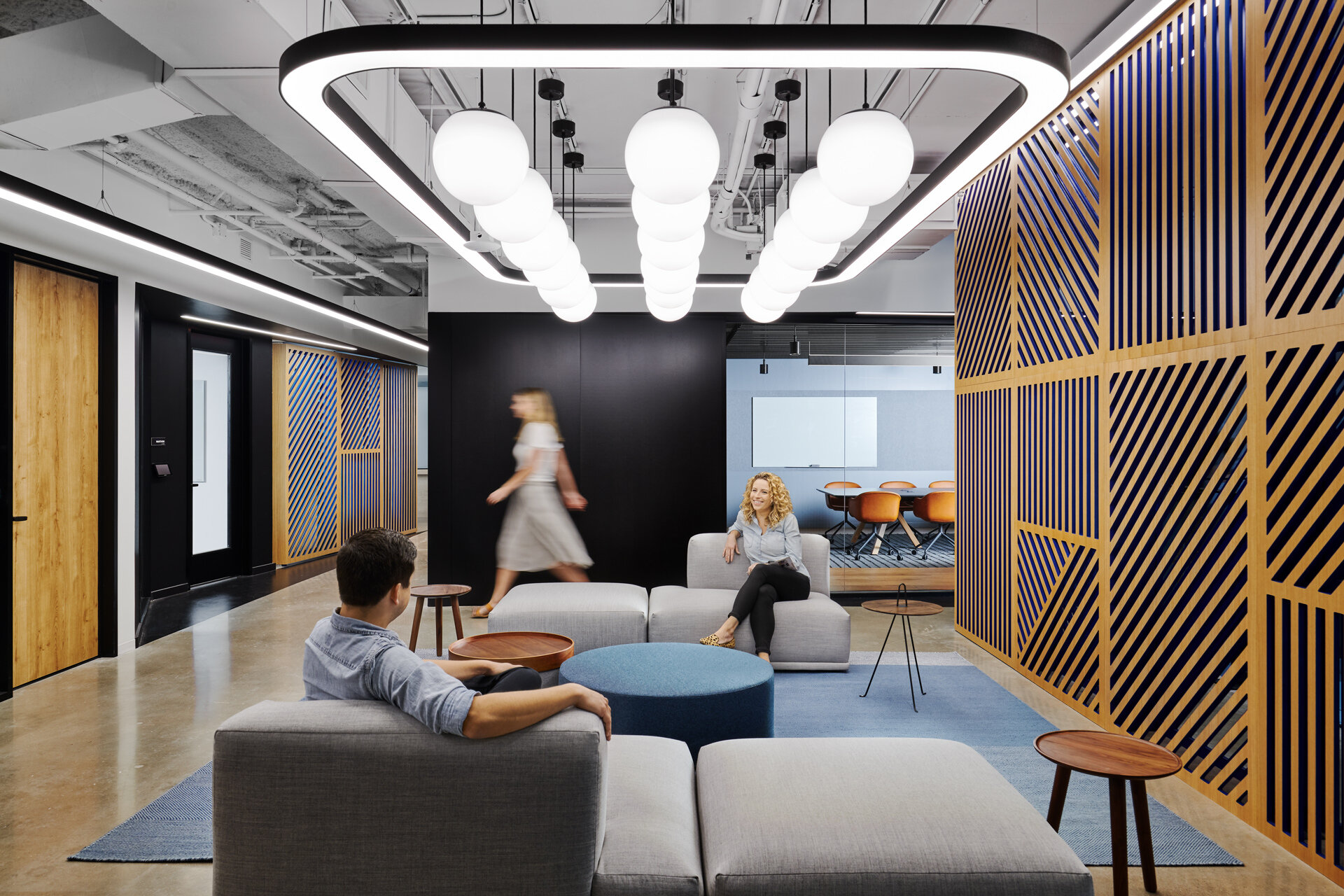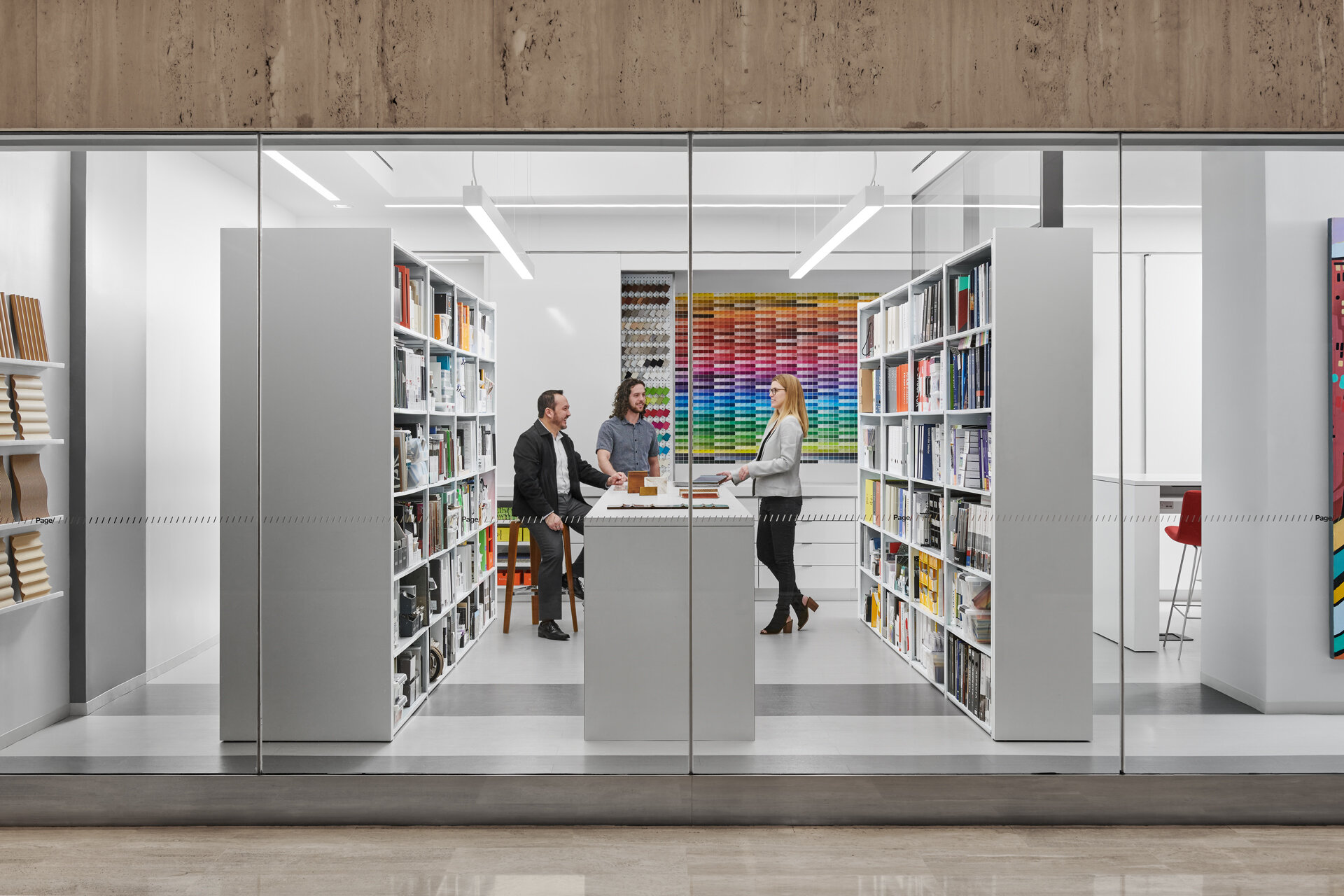A few months back, I posted a video and write up describing a handful of techniques that I employ in order to effectively shoot a space that is behind glass without distracting reflections that distract from the design beyond. This video shows a recent example of one of these images from a project we shot with Perkins + Will of an office space in Dallas. This particular space featured a soft seating area in front of a large graphic wall. To add to the difficulty of capturing the space and how it sits within the larger context, the enclosing glazing features a film with a grid pattern which proved challenging when attempting to figure out how best to show the detail of the it, the wall graphic and some models using the room.
By dividing the room into two halves when determining how to light it, we are able to recreate the practical lighting that exists within it, giving a pleasing and natural quality of light. This lighting technique in conjunction with fast shutter speeds allows us to remove the majority of reflections from the camera side of the glass, however we did encounter some harsh reflections in the left hand chair from our strobes bouncing off of the white frames in the left of the frame, leading us to have to flag off those frames using black cloth.
Once lighting was complete, all that was left to do in post was to composite the information together and do some color corrections to end up with the below result.


